Enabling the AI-native Enterprise
2025 marks a pivotal moment in the journey of AI – a year when AI moves from aspiration to action, from hype to transformative impact. For a while now, AI has been the buzzword dominating boardrooms and tech conferences, but now, organisations across industries are no longer asking, “Should we explore AI?” Instead, they are demanding, “How can AI fundamentally redefine our business and maximise our impact?”
The imperative to embrace AI at scale has never been clearer. Organisations that fail to integrate AI risk falling behind in a rapidly changing landscape where agility, efficiency, and innovation define success. The next frontier lies not in experimenting with AI but in embedding it into the very fabric of organisations strategy. However, scaling AI comes with challenges—ethical considerations, data complexities, regulatory compliance, talent shortages, and change management require careful navigation.
This report explores the emerging trends, challenges, and transformative impacts of AI across 4 key industries – Financial Services, Energy & Utilities, Non-Profits, and the Government sector. It sheds light on the critical role AI will play in redefining business models, operational frameworks, and business impact. In 2025, the choice is clear: embrace AI boldly and lead the transformation, or risk irrelevance in an increasingly AI-driven world.

01
2025 AI Outlook: Opportunities across industries

01 Financial Services

02 Energy & Utilities

03 Non-Profits

04 Government Sector
01
Financial Services
In 2025, we expect the financial services industry to transition from treating AI as a standalone tool to embracing it as the foundation of their business operations. For organisations, being truly ‘AI-native’ means embedding AI into the core of decision-making, customer engagement, and operational workflows—making it the driving force behind every strategy and outcome. This approach goes beyond adopting AI solutions piecemeal; it involves reimagining business models, leveraging AI to unlock unprecedented efficiencies, and delivering hyper-personalised experiences at scale.
Some of the emerging opportunity areas for Financial Services to become AI-native are:
x


Hyper-Personalised Customer Experiences
Customers today demand personalised, real-time engagement with their financial institutions and AI-powered personalisation engines can analyse customer data at an unprecedented scale to deliver tailored financial products and services.

Predictive Analytics for Credit Risk
In a world where financial volatility and unpredictability are increasing, traditional credit risk models fall short in providing accurate and timely assessments. AI models can integrate both structured and unstructured data—including behavioral patterns and market trends—to create a 360-degree view of a borrower’s risk profile, enhancing decision-making precision.

Real-Time Fraud Detection
The rise in sophisticated cyberattacks and fraudulent schemes demands a proactive approach to fraud detection. Traditional rule-based systems struggle to identify complex fraud patterns and often result in false positives, which frustrate customers. AI’s advanced algorithms and real-time anomaly detection capabilities enable financial institutions to pinpoint fraudulent activities as they occur.

Intelligent Document Processing
Manual document processing in areas like loan applications, underwriting, and compliance reporting is time-consuming and prone to errors. AI automates these workflows, extracting and interpreting data from documents with speed and accuracy, enabling institutions to scale operations without increasing costs.

Robo-advisory and Wealth Management
The demand for affordable, data-driven financial advice is growing as customers seek accessible solutions for investment planning. Traditional wealth management services, often catering to high-net-worth individuals, exclude a large segment of the population. AI-powered robo-advisors democratise access to these services by offering affordable, automated, and accurate investment strategies.

Why Financial Services Need to adopt AI at Scale
Addressing Competitive Pressure
With fintech disruptors leveraging AI to provide agile, customer-centric solutions, traditional financial institutions must adopt AI to remain competitive. Organizations that fail to innovate risk losing market share to more agile competitors.

Improving Operational Efficiency
AI-driven automation reduces manual workloads, optimizes resource allocation, and enhances productivity. For example, intelligent automation of loan processing has reduced approval times from weeks to mere hours in leading banks.

Meeting Regulatory Requirements
AI enhances compliance by automating regulatory reporting, monitoring transactions for suspicious activities, and identifying compliance risks early. This reduces penalties and reputational damage.

Enhancing Decision-Making
Data-driven insights from AI enable better strategic decisions, from portfolio optimization to risk management. By integrating predictive analytics, financial institutions can anticipate market trends and adjust strategies accordingly.
AI-driven process automation reduces time-to-resolution for complex tasks like mortgage
processing and loan approvals by up to cutting average approval times from weeks to hours.
Financial institutions leveraging AI for real-time fraud detection have reported a reduction in fraudulent activities, saving billions in potential losses.
Banks that leverage AI for hyper-personalisation see a improvement in customer retention rates, driven by tailored offerings and proactive engagement.
AI-powered KYC processes accelerate customer onboarding times by up to reducing friction and improving first impressions.
AI-based credit scoring models have enabled a increase in lending to under served demographics.
02
Energy & Utilities
In 2025, the energy and utilities sector faces rising global demands, ambitious sustainability
targets, and the rapid integration of renewables, making traditional energy management
approaches insufficient. AI is emerging as the transformative solution to optimize operations,
enhance grid resilience, and drive a greener future. By embedding AI into their strategies,
energy providers can tackle modern energy complexities and redefine how energy is
produced, distributed, and consumed, ensuring a smarter, sustainable tomorrow.
Some of the emerging opportunity areas for Energy & Utilities to become AI-native are:
x


Predictive Maintenance of Assets

Smart Grid Optimisation
As energy systems become more complex with the integration of renewable energy sources and decentralised grids, managing load distribution, energy storage, and demand-supply balance is increasingly challenging. AI-powered smart grids can help reduce energy wastage, enhance grid stability, and support a smoother transition to greener energy systems.

Energy Consumption Forecasting
Accurate energy demand forecasting is vital for resource planning, avoiding underproduction or overproduction, reducing operational costs, and improving customer satisfaction by ensuring an uninterrupted supply. AI can leverage historical data, weather patterns, and consumer behavior to predict energy demand with precision and plan for demand response management.

Renewable Energy Integration
The variability of renewable energy sources like wind and solar poses significant challenges for grid operators. AI models can predict generation patterns, optimise storage, and integrate renewables into the energy mix seamlessly. This helps in maximising use of renewables, reduce reliance on fossil fuels and achieve sustainability targets.

AI-powered Customer Experience
Customer expectations in the energy and utilities industry are higher than ever, driven by demands for personalisation, transparency, and proactive support. AI enables energy providers to analyse vast amounts of customer data in real-time, delivering insights that fuel hyper-personalised services, such as tailored energy-saving recommendations and dynamic pricing plans. It also streamlines support through intelligent chatbots, providing instant, accurate assistance around the clock.

Why Energy & Utilities Need to adopt AI at Scale

Adapting to Energy Transition
The global shift toward renewable energy sources and decarbonization demands smarter energy systems. AI provides the tools to manage complex grids, integrate renewables, and reduce carbon footprints effectively.

Addressing Operational Inefficiencies
Legacy systems in the energy sector often operate with inefficiencies that lead to energy loss and higher costs. AI identifies inefficiencies, streamlines operations, and optimizes resource utilization, driving significant cost savings.

Meeting Regulatory and Sustainability Goals
Stringent government policies and climate agreements require energy providers to monitor emissions, adopt cleaner energy solutions, and achieve net-zero goals. AI helps companies comply with regulations by providing real-time analytics and actionable insights.

Enhancing Grid Resilience
Extreme weather events and rising energy demands strain traditional grids. AI-powered smart grids enhance resilience by predicting disruptions and facilitating quicker recovery times.

Maximizing Profitability in Competitive Markets
The rise of decentralized energy producers and dynamic trading markets demands agility and precision. AI enables energy providers to make data-driven decisions, optimize pricing, and gain a competitive edge.
AI-powered energy optimization tools have the potential to reduce global CO2 emissions by aligning with net-zero goals.
AI can improve the integration of renewables, leading to a increase in renewable energy utilization in grids by 2025.
AI-based forecasting improves energy demand prediction accuracy by reducing costs associated with overproduction or
shortfalls.
Energy providers leveraging AI to deliver
personalized customer experiences have reported a increase in customer satisfaction.
AI-based forecasting improves energy demand prediction accuracy by reducing costs associated with overproduction
or shortfalls.
03
Non-Profits
Non-Profits are always under pressure to deliver greater impact with limited
resources. AI is revolutionising this sector by optimising fundraising, streamlining
operations, and improving outreach to underserved communities. Embracing AI is
vital for Non-Profits to amplify their mission and scale their impact effectively.
Some of the emerging opportunity areas for Non-Profits to become AI-native are:
x


AI for fundraising optimisation
Fundraising is the life blood of Non-profits, yet traditional method soften struggle to target the right donors or optimise engagement strategies. By using AI, Non-profitscan analyse donor behavior,financial capacity, and engagement history to predict giving patterns and identify high-potential donors.It can also help in implementing personalised campaigns, increase donor retention, and maximise fundraising efforts while reducing costs. AI-driven tools also help design more effective appeals that resonate with donor motivations.

Resource Allocation and Impact Assessment
Efficiently allocating limited resources is a perennial challenge for non-Profits. AI enables organisations to analyse data on community needs, project outcomes, and funding efficiency to make data-driven allocation decisions. AI ensures resources are directed to initiatives that yield the highest impact, enhancing transparency and accountability to stakeholders.

Volunteer Management and Retention
Managing a large, dynamic volunteer workforce is complex. AI platforms match volunteers with opportunities based on their skills, availability, and preferences, optimising engagement and impact. AI reduces administrative burden and ensures the right people are in the right roles, enhancing operational efficiency and volunteer satisfaction.

Automating administrative process
Non-profits often operate with limited administrative staff and resources. AI automates repetitive tasks, such as donor database management, report generation, and grant applications, freeing up staff to focus on mission-critical activities. This reduces operational costs, increases productivity, and allows organisations to dedicate more resources to their core mission.

Improving beneficiary targeting
Identifying and reaching the right beneficiaries for programs can be challenging. AI analyses demographic, geographic, and socio-economic data to identify underserved populations and predict where assistance will have the greatest impact. This ensures equitable resource distribution and maximises the effectiveness of interventions.

Why Non-Profits Need to adopt AI at Scale

Maximizing Impact with Limited Resources
Non-Profits face unique constraints, with tight budgets and high expectations for transparency and impact. AI provides data-driven insights that help organizations do more with less, ensuring every dollar and effort counts.

Addressing Increasing Complexity
The challenges faced by non-Profits—ranging from climate change to public health crises—are growing more complex. AI equips organizations with the tools to analyze these multifaceted issues and develop targeted, effective responses.

Enhancing Stakeholder Confidence
Donors, volunteers, and beneficiaries increasingly demand accountability and measurable outcomes. AI enables organizations to track, measure, and demonstrate the impact of their initiatives, fostering greater trust and engagement.

Scaling Operations
As demand for services increases, AI helps non-Profits scale their operations efficiently, whether by automating workflows, expanding fundraising capabilities, or improving crisis response mechanisms.
Organisations using AI for donor targeting report an improvement in donor retention rates.
AI-matched volunteer placements improve
engagement rates byincreasing the overall impact of volunteer programs.
Automating administrative tasks through AI can reduce overhead costs by enabling more funds to go directly to program delivery.
AI-powered campaigns have achieved a
higher engagement rate through targeted
messaging and data-driven storytelling.
AI-optimised resource distribution has increased the efficiency of aid delivery by ensuring that help reaches those who need it most.
04
Government Sector
In the era of rising citizen demands and evolving complexities of challenges such as climate change and cybersecurity, traditional methods of public service delivery fall short, making AI essential for optimising public services, enhancing security, and driving data-driven policies. AI offers transformative potential, from smarter services toenhanced public safety, enabling governments to meet challenges and deliver impactful, citizen-focused solutions.
Some of the emerging opportunity areas for Governments to become AI-native are:
x


Citizen-centric services
Citizens increasingly expect seamless, efficient, and personalised interactions with government agencies. AI-powered chatbots, virtual assistants, and automated workflows enable governments to provide real-time, tailored responses to citizen inquiries and streamline public services. By reducing wait times and improving accessibility, AI enhances citizen satisfaction and trust in government services while lowering operational costs.

Smart Cities and Infrastructure Optimisation
Urbanisation is creating immense pressure on infrastructure, from transportation to utilities. AI enables smart city initiatives by optimising traffic flow, managing waste, and improving energy efficiency. AI-powered IoT devices and sensors collect real-time data to enhance urban planning and resource management.

Healthcare Administration and Public Health Insights
Governments play a critical role in public health, especially in disease prevention, vaccine distribution, and crisis response. AI models analyse healthcare data to predict disease outbreaks, optimise resource allocation, and identify gaps in healthcare delivery.

Public Safety and Cybersecurity
AI-driven surveillance systems, predictive policing tools, and risk assessment models provide law enforcement and emergency responders with actionable insights to prevent incidents and respond swiftly. AI enhances cybersecurity capabilities through real-time threat detection, autonomous systems, and advanced cyberattack prevention tools.

Workforce Automation & Public Sector Efficiency
Governments often face inefficiencies due to bureaucratic processes and outdated systems. AI automates routine tasks such as document processing, compliance checks, and citizen registrations, freeing up staff for higher-value activities. AI reduces administrative burdens, accelerates service delivery, and enables governments to do more with limited resources.

Why Governments Need to adopt AI at Scale

Meeting Rising Citizen Expectations
Citizens increasingly expect the same level of service from governments as they receive from private-sector organizations. AI allows governments to deliver faster, more efficient, and highly personalized services.
Driving Innovation in Public Services
AI fosters innovation by enabling new approaches to governance, such as smart city initiatives, data-driven policymaking, and advanced public health systems.
Improving Transparency and Accountability
By using AI to monitor activities, detect fraud, and analyze data, governments can ensure greater accountability and transparency, building trust among citizens.

Competitive Advantage in Global Innovation
Countries that invest in AI stand to lead in global competitiveness, technological advancement, and economic growth. AI is a cornerstone for building modern, future-ready nations.

Enhancing Operational Efficiency
Public sector budgets are often constrained, requiring governments to achieve more with fewer resources. AI-driven automation reduces inefficiencies and lowers operational costs while maintaining service quality.
Governments using AI for public service delivery have reduced response times by improving citizen satisfaction.
AI-driven smart traffic systems have reduced
congestion in urban areas by improving commute times and lowering emissions.
Smart city initiatives powered by AI have achieved reductions in energy consumption, aligning with global sustainability goals.
AI systems have improved healthcare resource allocation, leading to an improvement in healthcare delivery efficiency in government run programs.
AI-driven tools for administrative tasks have increased productivity in government offices by enabling employees to focus on high-value activities.
02
Barriers to Scaling AI Adoption
Barriers to Scaling AI Adoption
While enterprises across industries recognize AI’s transformative potential and have begun piloting its use, many struggle to move beyond isolated initiatives to full-scale adoption. The challenge lies in integrating AI into core functions, addressing data silos, navigating talent gaps, and ensuring alignment with organizational goals. Scaling AI requires a strategic shift from treating it as a standalone tool to embedding it deeply into the organization’s DNA. Only by overcoming these barriers can businesses truly become AI-native, thereby driving innovation, efficiency, and sustained competitive advantage.


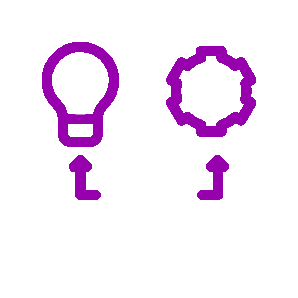


03
Strategic recommendations for Enterprises to scale-up AI initiatives
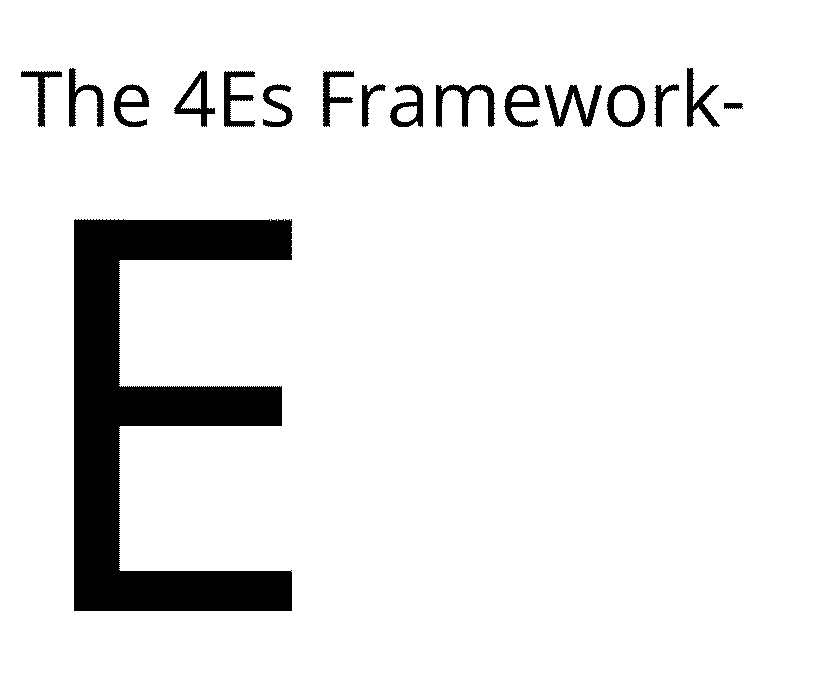
bound by a foundation of AI Governance—
– is a vital tool for enterprises to become AI-native. The framework provides a structured and actionable roadmap that breaks the complexities of AI adoption into manageable steps, while ensuring ethical and equitable use.
It not only simplifies the integration process but also ensures that each phase progresses in alignment with organisational objectives and priorities. For enterprises, this approach offers a strategic way to test, refine, and scale AI interventions, thus helping enterprises transition from being AI-powered to AI-native.


Understanding the impact that AI can create in improving customer experience
- Gain a comprehensive understanding of AI to strategically analyse and plan how to leverage it effectively to solve the end-customer challenges.
- Look at building foundational knowledge and awareness of the benefits.
- Draw inspiration from successful AI pilot projects implemented by other firms for valuable insights.

Assessing organisational and technical readiness
- Measuring the firm’s readiness and identifying roadblocks and corrective steps for AI adoption is extremely crucial to successful implementation.
- Determine whether AI can integrate seamlessly with current systems.
- Evaluate the technological skills and AI expertise of personnel and identify gaps.
- Identify the organisational and technical barriers that are hindering the firm’s ability to implement initiatives through AI-readiness assessments.
- Partner with technology providers to build a comprehensive AI-strategy roadmap that includes navigating roadblocks, resource and budget planning, solution building, and deployment planning.
- Measure the data readiness and evaluate the accuracy, completeness, and consistency of data in-order to take necessary actions such as investing in modern data management platforms, that enable secure, scalable, and efficient handling of large datasets.
- Establish protocols to standardise data collection and storage practices across departments, making data more accessible and usable for AI applications.
- Integrate disparate data sources into centralised repositories to eliminate silos and improve interoperability.
- Ensure data collection and storage comply with legal requirements, implementing data encryption, access controls, and anonymisation where necessary.

Test AI solutions through small-scale POCs
- After assessing readiness, firms should prioritise implementing a pilot project to validate AI’s effectiveness, fine-tune processes, and lay a strong foundation for scaling up successfully.
- Identify high impact use cases with clear, measurable objectives.
- Develop Pilot AI solutions by working with technology partners to design solutions tailored to end-customer needs.
- Deploy AI solutions in a limited scope rollout or within a defined area or community to monitor performance under real-world conditions.
After the pilot phase, many firms face challenges in transitioning to large-scale implementation due to a failure to fully ‘embrace’ AI. This critical phase involves reflecting on the pilot project’s outcomes, gathering customer feedback, reassessing organisational and technical readiness, and, most importantly, driving change management among internal stakeholders and end-customers. Effective change management is essential to foster understanding and acceptance of AI’s integration and its impact on service delivery. To achieve this, we recommend that firms:
- Monitor and test the results of AI pilot projects by collecting data on how end-customers interact with the system as well as identify any usability challenges or technical issues.
- Measure key performance indicators and defined metrics such as processing time, cost savings, customer satisfaction, or error reduction to evaluate the pilot project’s success.
- Assess impact through a comparison of pre- and post-implementation outcomes of the pilot project.
- Improve iteratively and repeat readiness assessments from the ‘Evaluate’ phase and resolve roadblocks before proceeding to large-scale AI implementation.
- Promote a culture of innovation and collaboration for AI projects that values experimentation and learning from failures of small-scale AI pilot projects. Break down departmental silos to encourage collaboration across teams, ensuring broader participation and shared ownership of AI projects.
- Target training and AI literacy programs by collaborating with external partners on customised workshops for employees at various levels—technical, managerial, and executive.
- Encourage stakeholder engagement through discussions about AI implementations, hosting town halls, surveys, and focus groups to address concerns.
- Build leadership buy-in by educating senior leaders to help them champion AI initiatives and align them with strategic goals.
- Communicate transparently with end-customers through campaigns clearly explain how AI benefits emphasising its role in enhancing—replacing—human decision-making. Develop transparency reports for each AI project, outlining how data is used, how decisions are made, and safeguards in place.
After successfully testing and refining AI solutions during pilot phases and ensuring readiness through comprehensive assessments, in this phase, must shift focus to scaling maximising impact, and seamlessly integrating AI into core functions.
This phase focuses on driving continuous enhancements through evaluation of ROI of large-scale AI deployments by analysing operational costs, efficiency gains, and improvements in customer satisfaction metrics, ensuring sustained value and impact.
AI Governance
AI governance is a cornerstone for firms across industries to implement AI responsibly and effectively. Safe and responsible use of AI is required to keep customer confidence and trust intact in the long run.
The core elements of AI governance that firms must consider:

Prioritizing cybersecurity: through investment in advanced security solutions to protect against vulnerabilities, build robustness, and disaster recovery plans to ensure continuity of AI services during outages or security incidents.

Adhering to data privacy protection laws: including anonymization, secure storage and use of personal data of end-customers.

Developing ethical AI frameworks: and guidelines to ensure fairness, accountability, and transparency. Conduct ethical impact assessments for all AI projects to identify potential risks and mitigate them proactively.

Implementing auditing mechanisms: to review AI systems for bias, fairness, and compliance with ethical standards. Periodic impact assessments can help in evaluating the ethical and societal implications of AI systems. Share the results of such assessments publicly to build trust and demonstrate accountability among end-customers.

Promoting responsible use of AI: through emphasis on ‘Human-centred AI’ which highlights its role as a tool supporting, rather than replacing, human decision-making. AI can serve as a powerful tool to augment human decision-making by providing data-driven insights, identifying patterns, and automating routine tasks, thereby enabling humans to focus on critical thinking, creativity, and complex problem-solving. This collaboration ensures that decisions are both informed by technology and grounded in human values, ethics, and contextual understanding, preserving the irreplaceable role of human intuition and accountability.

In essence, the 4Es framework is a holistic strategy that helps companies realise the full potential of AI. By addressing readiness, embracing AI, and prioritising its responsible use, firms can position themselves to become AI-native. This is the moment for firms to lead with vision and purpose, reshaping the future of business.
How we can help you in assessing readiness for AI
Our comprehensive AI solutions are designed to enable enterprises like yours to become AI-native. With customised strategies and technologies, we deliver measurable outcomes that enhance business value, drive operational efficiency, and foster stronger engagement with your end customers.


